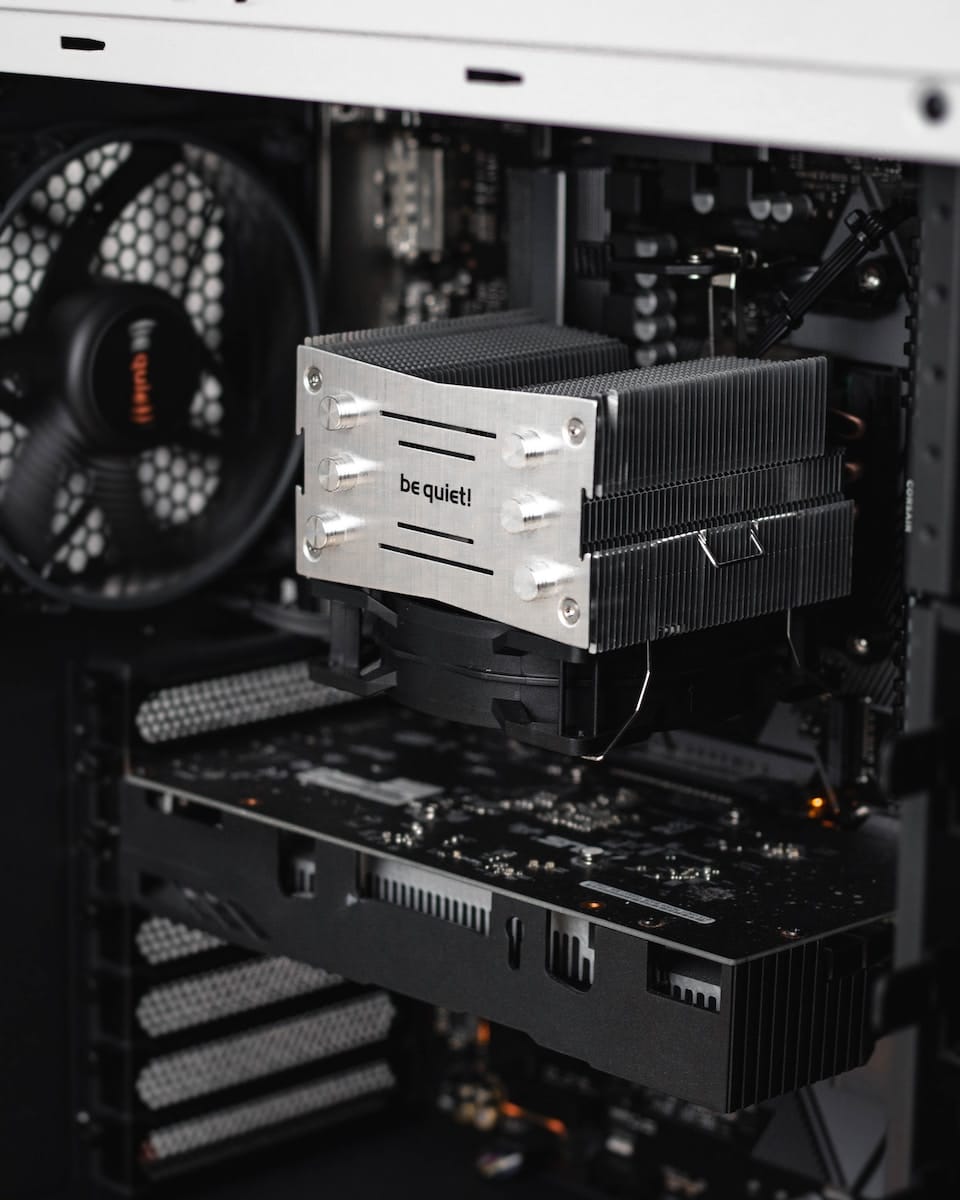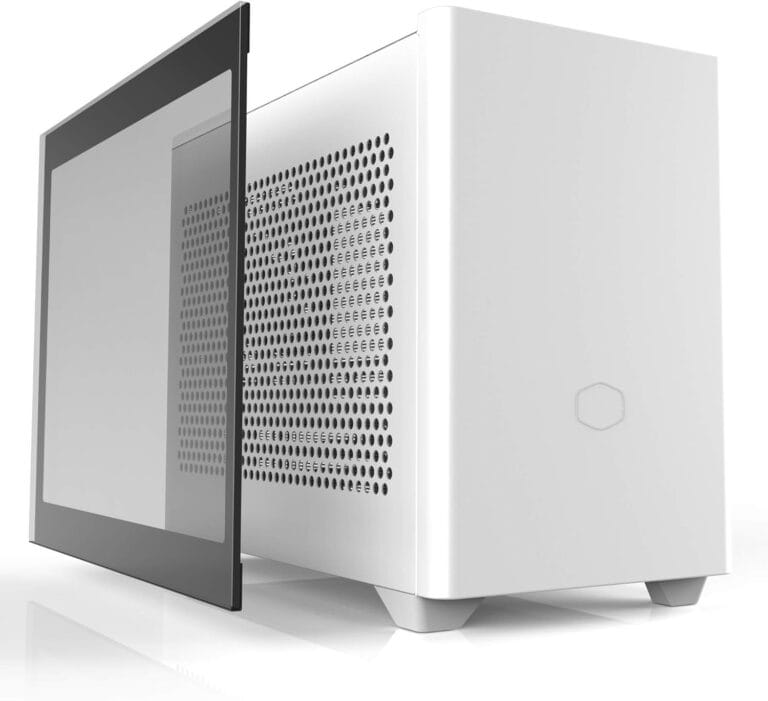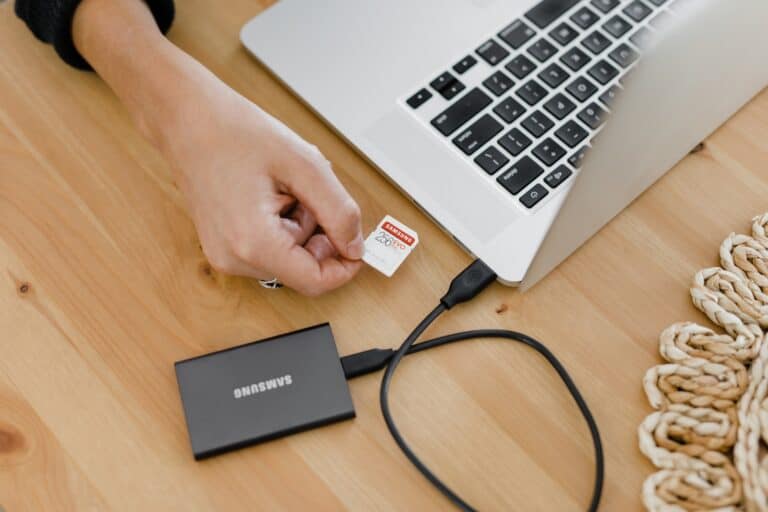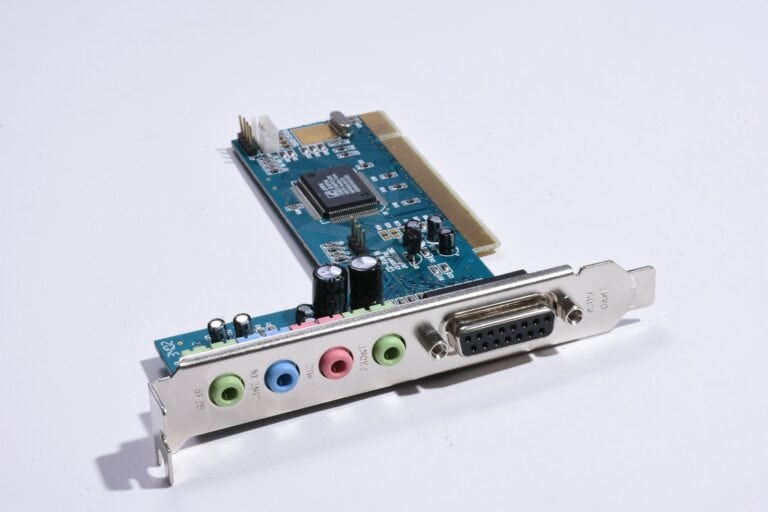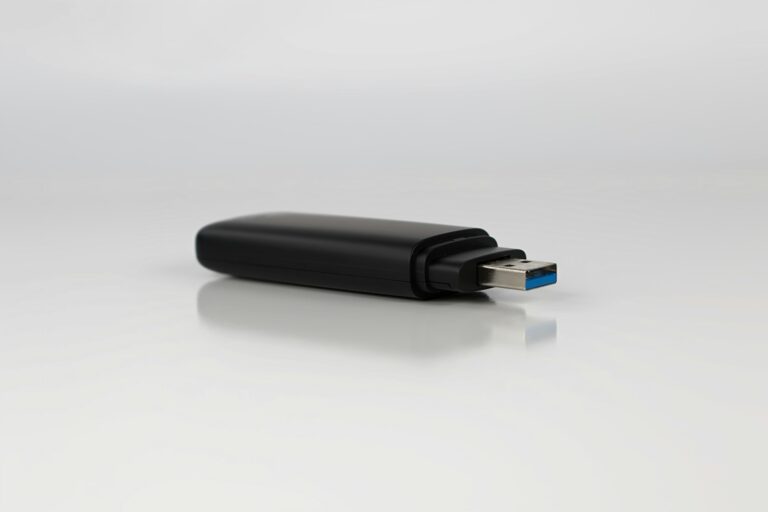Computer hardware is the physical parts of a computer system. It includes the central processing unit (CPU), random access memory (RAM), hard drives (HDDs or SSDs), graphics processing units (GPUs), motherboards, and more. These parts work together to process, store, and display data.
1. Understanding Computer Hardware
Computer hardware refers to the physical components that make up your computer system. These parts work together to process data, display visuals, and handle user input.
🧩 Core Components
| Component | Function | Upgrade Benefit |
|---|---|---|
| CPU (Central Processing Unit) | The brain of your computer; handles calculations and tasks. | Faster performance, smoother multitasking. |
| GPU (Graphics Processing Unit) | Renders images, video, and games. | Better gaming, video editing, and 3D rendering. |
| Motherboard | Connects all components and allows them to communicate. | Newer boards support faster CPUs, RAM, and storage. |
| RAM (Memory) | Temporary storage for active tasks and programs. | Improves speed and multitasking ability. |
| Storage (HDD/SSD/NVMe) | Long-term data storage. | SSDs and NVMe drives greatly improve load times. |
| Power Supply (PSU) | Provides power to all components. | Higher wattage supports better GPUs and CPUs. |
| Cooling System (Fans, Liquid Coolers) | Keeps components at safe temperatures. | Prevents overheating, improves performance stability. |
| Case (Chassis) | Houses all components. | Better airflow, aesthetics, and upgrade space. |
For a quick compatibility check, you can use tools like BuildMyPC or Newegg’s PC Upgrader to ensure your parts work together.
🖱️ 2. Essential Accessories
Accessories improve usability, comfort, and productivity. Here are the key ones:
| Accessory | Description | Why It Matters |
|---|---|---|
| Monitor | Displays visuals from your PC. | Higher refresh rates and resolutions improve clarity and gaming experience. |
| Keyboard | Input device for typing and commands. | Mechanical keyboards offer better responsiveness. |
| Mouse | Controls cursor movement. | Ergonomic or high-DPI mice improve precision and comfort. |
| Headset / Speakers | Audio output devices. | Better sound quality for work, games, and calls. |
| Webcam | Captures video for meetings or streaming. | Higher resolution improves video quality. |
| External Drives | Portable storage for backups or extra space. | Useful for data security and mobility. |
| Docking Station / USB Hub | Expands connectivity options. | Adds more ports for peripherals and displays. |
| Surge Protector / UPS | Protects hardware from power surges. | Prevents data loss and component damage. |
⚙️ 3. Common Computer Upgrades
Upgrading can extend your PC’s life and boost performance without buying a new system.
🔼 Most Impactful Upgrades
- Upgrade to an SSD or NVMe Drive
- Replaces slow hard drives with faster solid-state storage.
- Boot and load times can improve by 5–10x.
- Add More RAM
- 16GB is ideal for most users; 32GB+ for heavy multitasking or creative work.
- Upgrade the GPU
- Ideal for gamers, designers, and video editors.
- Ensure your PSU and case can support it.
- Install a New CPU
- Boosts processing power but may require a new motherboard.
- Improve Cooling
- Add case fans or liquid cooling for better thermal performance.
- Upgrade the Power Supply (PSU)
- Necessary when installing high-performance GPUs or multiple drives.
- Add Peripherals
- A new monitor, mechanical keyboard, or ergonomic mouse can dramatically improve your daily experience.
🧠 4. How to Plan an Upgrade
- Assess Current Specs
- On Windows: Press
Ctrl + Shift + Esc→ Performance Tab. - On macOS: Click → About This Mac.
- On Windows: Press
- Identify Bottlenecks
- If your system is slow to boot → Upgrade storage.
- If multitasking lags → Add RAM.
- If games stutter → Upgrade GPU or CPU.
- Check Compatibility
- Use compatibility checkers like BuildMyPC or manufacturer websites.
- Back Up Your Data
- Always back up to an external drive or cloud before making hardware changes.
- Install and Test
- After upgrading, run system diagnostics or benchmarks to ensure stability.
🧰 5. Maintenance Tips
- Clean Dust Regularly: Use compressed air to prevent overheating.
- Update Drivers: Keep GPU, chipset, and BIOS drivers current.
- Monitor Temperatures: Tools like HWMonitor or MSI Afterburner help track heat levels.
- Replace Thermal Paste: Every 2–3 years for optimal CPU cooling.
🏁 6. Summary
| Category | Example Upgrades | Benefits |
|---|---|---|
| Performance | SSD, RAM, CPU, GPU | Faster speed, better multitasking |
| Aesthetics | Case, RGB lighting | Improved look and airflow |
| Comfort & Productivity | Monitor, keyboard, mouse | Better ergonomics and efficiency |
| Reliability | PSU, cooling, UPS | Longer lifespan, fewer crashes |
📚 Helpful Resources
- BuildMyPC – Compatibility Checker
- Newegg PC Upgrader
- HP Tech Takes: PC Upgrade Guide
- Best Buy PC Components Buying Guide (PDF)
Guide to PC Hardware, Accessories, and Upgrades
Core Components: The Heart of Your Machine
- Central Processing Unit (CPU): This is like the brain of your computer, doing all the thinking and calculations. Some popular brands include Intel and AMD.
- Motherboard: Think of this as the foundation where everything connects. It’s important to choose one that’s compatible with your CPU and other parts.
- Random Access Memory (RAM): RAM helps your computer multitask, keeping things running smoothly. More RAM is usually better, but you’ll want to check how much your motherboard supports.
- Graphics Processing Unit (GPU): This handles all the visuals, especially important for gaming or video editing. You might hear it called a graphics card.
- Storage Drive: This is where you keep your files, programs, and operating system. You can choose between solid state drives (SSDs), which are fast, or hard disk drives (HDDs), which offer more storage.
Essential Accessories: Enhancing Your Experience
- Monitor: This is your window into the digital world. Consider factors like size, resolution, and refresh rate to find one that suits your needs.
- Keyboard and Mouse: These are your main tools for interacting with your computer. There are many styles and features available, so choose what feels right for you.
- Headphones or Speakers: For sound output, consider whether you prefer over-ear headphones, earbuds, or external speakers.
- Webcam and Microphone: Essential for video calls and online meetings.
Upgrades: Boosting Performance and Functionality
- Additional RAM: Adding more RAM can often speed up your computer, especially if you do a lot of multitasking.
- Better GPU: A higher-end graphics card can significantly improve gaming performance and visual quality.
- More Storage: If you run out of space, you can add another hard drive or upgrade to a larger one.
- CPU Cooler: A better cooler can help keep your CPU running at its best, especially if you’re overclocking.

Putting It All Together: Building Your Rig
Building your own PC can be a rewarding experience, but it requires some technical knowledge. If you’re not comfortable doing it yourself, you can often find pre-built systems or hire someone to put it together for you.
Choosing the Right Parts: Research is Key
Before you buy anything, do some research to find out what parts are compatible with each other and what will meet your needs. There are many online resources and communities where you can get advice and recommendations.
Key Takeaways:
- Essential Components: Discover the core elements of computer hardware, including CPUs, motherboards, and RAM.
- Storage Solutions: Explore the differences between HDDs and SSDs for data storage.
- Branding and Quality: Learn about the top brands in the market and their unique offerings.
- Graphics and Displays: Understand the role of graphics cards and monitors in enhancing user experience.
- Input Devices: Get insights into the variety and uses of keyboards and mice.
- Cooling and Power: Delve into the importance of cooling systems and power supplies for optimal performance.
Computer Hardware, Accessories, and Upgrades
| Category | Subcategory | Example | Description |
|---|---|---|---|
| Hardware | Essential Components | Processor (CPU), Motherboard, RAM, Storage (HDD/SSD), Graphics Card (GPU), Power Supply Unit (PSU), Case | The building blocks of a computer system. These components work together to perform basic computing tasks. |
| Peripherals | Monitor, Keyboard, Mouse, Speakers, Headphones, Webcam | Devices that connect to your computer and allow you to interact with it. | |
| Internal Components | CPU Cooler, Fans, Cables, Optical Drives (DVD/Blu-Ray), Sound Card | Additional components that can be added to improve the performance or functionality of your computer. | |
| Accessories | Input Devices | Gaming Mouse, Gaming Keyboard, Drawing Tablet, MIDI Keyboard | Devices that allow you to input data and control your computer. |
| Output Devices | External Hard Drive, USB Flash Drive, Printer, Projector | Devices that allow you to output data from your computer to other media. | |
| Network Devices | Wireless Router, Ethernet Cable, Network Adapter | Devices that allow you to connect your computer to a network. | |
| Other | Carrying Case, Laptop Sleeve, Backpack, Cleaning Kit, Surge Protector | Accessories that enhance the portability, protection, and usability of your computer. | |
| Upgrades | Performance Upgrades | Faster Processor, More RAM, SSD Storage, Upgraded Graphics Card | Improve the speed and responsiveness of your computer. |
| Storage Upgrades | External Hard Drive, USB Flash Drive, Cloud Storage | Increase the storage capacity of your computer for data files, images, videos, and music. | |
| Display Upgrades | Larger Monitor, Higher Resolution Monitor, Curved Monitor | Enhance the visual experience with a larger display, higher resolution, or curved design. | |
| Other Upgrades | Soundbar, Gaming Headset, Microphone, External Graphics Card (eGPU) | Enhance the audio, communication, or graphics capabilities of your computer. |
Note: This is a basic overview, and there are many other hardware, accessories, and upgrades available. The specific items you need will depend on your individual needs and budget.
Essential Components of Computer Hardware
Central Processing Unit (CPU)
The CPU, often referred to as the brain of the computer, orchestrates the operations of all other components. It processes instructions and performs calculations, playing a pivotal role in the overall performance of the system. Brands like Intel and AMD dominate this space, each offering a range of processors catering to different needs.
Upgrading the CPU can lead to better performance, but isn’t always practical because it may require a compatible motherboard (which is a separate upgrade).
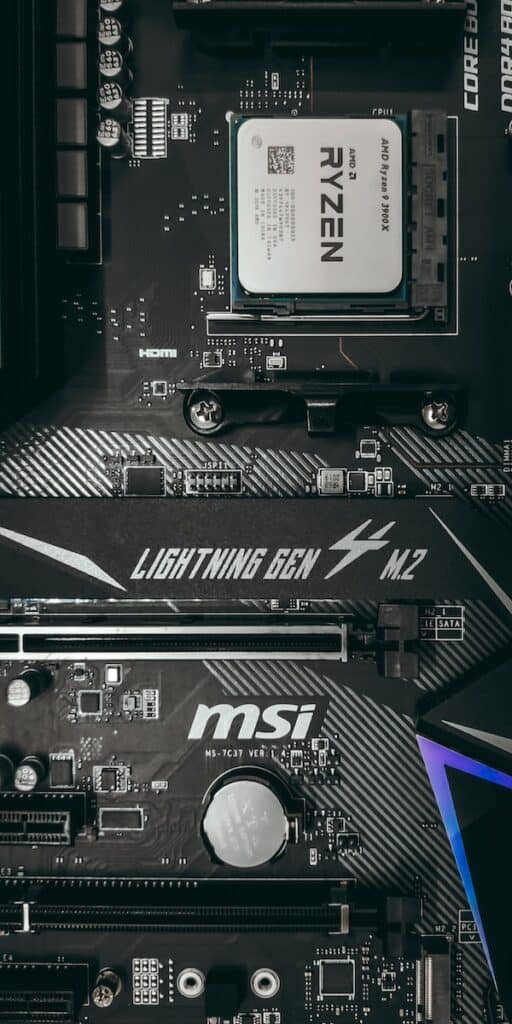
Motherboard
The motherboard acts as the backbone, connecting all components of the computer. It houses the CPU, RAM, and other crucial elements, facilitating communication between them. The choice of motherboard impacts the computer’s compatibility with other components and overall functionality.
Computer Memory
When people refer to “computer memory” they’re either talking about your RAM or your Storage space – such as a Hard Drive or SSD. Memory is a key component of a system that determines how many tasks your computer can handle simultaneously and/or how many files and what capacity of files you can hold on to. Upgrading RAM is one of the easiest and most cost-effective ways to boost your computer’s performance.
Random Access Memory (RAM)
RAM is where the computer stores data for quick access. It’s a temporary storage that holds information currently in use, allowing for swift retrieval and processing. The amount and speed of RAM significantly affect the computer’s ability to multitask and handle demanding applications.
Adding more RAM can dramatically improve performance, especially for resource-intensive tasks like gaming or video editing.
Storage Solutions: HDDs vs. SSDs
Hard Disk Drives (HDDs) and Solid State Drives (SSDs) are the two primary types of storage devices. HDDs, the traditional choice, offer ample storage at a lower cost but are slower and more prone to physical damage. SSDs, on the other hand, provide faster data access and are more durable, albeit at a higher price point.
Hard drives and solid-state drives (SSDs) are indispensable for backing up data or expanding a computer’s storage capacity. They offer portability and the peace of mind that comes with having a secure copy of your important files.
SSDs: The New Standard in Storage
Solid State Drives (SSDs) offer faster data access speeds compared to traditional hard drives. Upgrading to an SSD can significantly reduce boot times and improve overall system responsiveness.

Graphics Card (GPU)
Graphics Processing Units (GPUs) – also referred to as Video Cards – are critical for rendering images, videos, and animations. Upgrading your GPU can enhance your computer’s ability to handle graphic-intensive tasks like gaming or 3D modeling. Choosing your graphics card is critical when it comes to gaming and professional graphic design.
In a typical build, the graphics card will be the most expensive component and the processing power it can deliver is what will affect your ability to play certain games and what quality / frame-rates you get.
Monitor
A monitor is what you visually look at when using your computer. The monitor works in tandem with the graphics card to display the output. The resolution, refresh rate, and panel technology of monitors are key factors in determining image quality.
They range from basic models for everyday use to high-end displays with features like 4K resolution and color accuracy for professionals.
The Importance of a Good Computer Monitor
A high-quality computer monitor can make a significant difference in how you interact with your computer. Monitors with higher resolutions, faster refresh rates, and better color accuracy can improve productivity and enhance the gaming and viewing experience.
Power Supply
The power supply unit (PSU) is responsible for providing stable power to all components. Its capacity and efficiency rating should match the demands of the system. Choosing a quality power supply that meets and exceeds your requirements is a critical aspect of building your system. You want to give yourself a 20-30% buffer over your basic power needs to account for future expansion and changes that may occur.
It’s always a good idea to stick with the quality brands in PSUs to avoid issues that “cheap” ones can cause. Here’s a list of the best of the best:
- Seasonic: Renowned for their high quality, reliability, and long-lasting performance. Offers a wide range of PSUs from budget-friendly to high-end models with 80+ certification levels.
- Corsair: Popular brand offering a diverse range of PSUs with excellent performance, quiet operation, and innovative features like software control and modular cables.
- EVGA: Popular among gamers for their Supernova series PSUs, which offer top-tier performance, high-quality components, and excellent cable management.
- Be Quiet!: German brand known for their silent PC components. Offers a range of PSUs with excellent noise suppression and high efficiency, making them ideal for noise-sensitive users.
- Thermaltake: Offers a wide range of PSUs at various price points, known for their good value for money and innovative features like RGB lighting.
- NZXT: Popular among PC builders for their aesthetically pleasing PSUs with modular cables and clean designs.
Surge Protectors and UPS
Surge protectors and Uninterruptible Power Supplies (UPS) safeguard your computer and accessories from power surges and outages, preventing data loss and hardware damage.
Cooling System
Overheating can lead to hardware failure. That’s why your cooling systems, including fans and liquid cooling solutions, are essential for maintaining optimal temperatures. It’s critical to make sure your CPU has a cooling fan on it so a lot of focus is put on that (and for good reason). Beyond just the CPU, however, the overall health of your system can be impacted by the airflow and cooling inside the case so cooling is a big deal when building & designing your PC.
Computer Accessories: Enhancing the Experience
Computer accessories like keyboards, mice, speakers, and webcams can significantly enhance your computing experience. Upgrading these peripherals can lead to better ergonomics, increased functionality, and a more enjoyable user experience.
Keyboards and Mice: Tools for Input
The choice of keyboard and mouse can significantly impact user experience. Mechanical keyboards, known for their tactile feedback, are popular among gamers and typists. Ergonomic mice and keyboards are designed to reduce strain during prolonged use, a crucial aspect for professionals.
They come in various forms: wired, wireless, ergonomic, compact, gaming-oriented, and more. The right set can significantly impact your comfort and productivity.
Computer Mouse
A computer mouse is an essential input device, allowing users to navigate and interact with their computer’s interface. Over the years, it has evolved from a simple two-button device to sophisticated models featuring multiple buttons and scroll wheels for enhanced functionality.
Gaming Keyboards
Gaming keyboards are designed for precision and durability. Features like programmable keys, RGB lighting, and adjustable DPI settings on mice make a significant difference in gaming performance and personalization.
GadgetMates Recommendation: For insights into must-have accessories for the ultimate gaming setup, visit https://gadgetmates.com/gamers-unite-5-must-have-accessories-for-the-ultimate-gaming-setup.
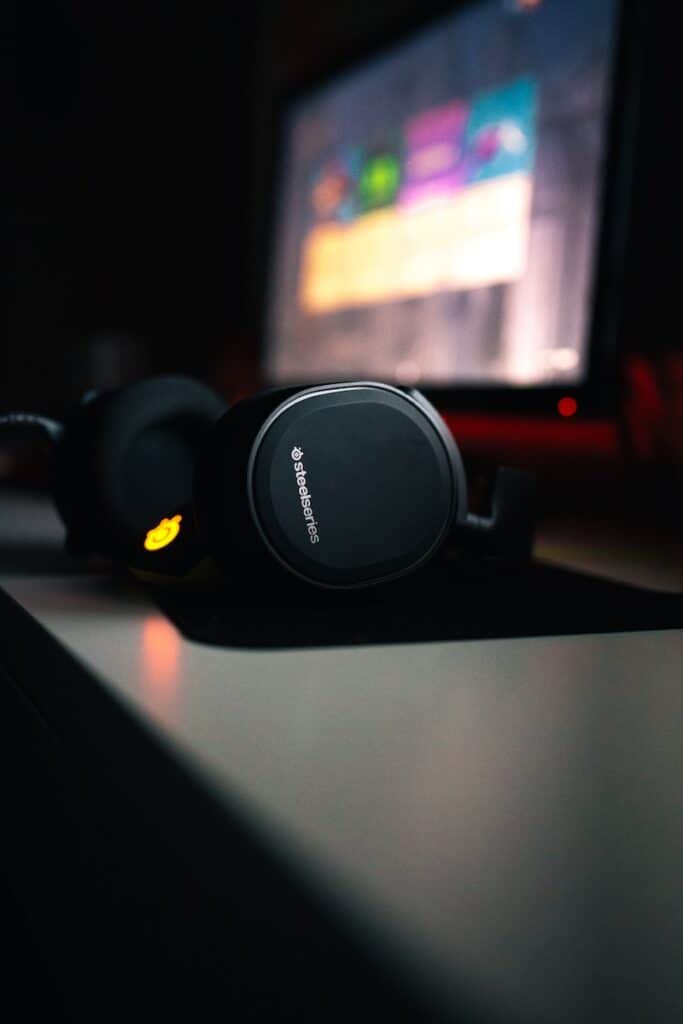
Sound Systems and Headsets
Speakers and headphones are essential for those who use their computers for multimedia consumption or communications. Whether it’s for a video conference, gaming, or enjoying music, audio accessories can greatly enhance the sound quality of your computer.
Immersive audio is a game-changer in both gaming and multimedia experiences. High-quality speakers and headsets with features like surround sound and noise cancellation can significantly enhance immersion.
Printers and Scanners
From Digital to Physical Printers and scanners bridge the gap between digital content and physical media. They are crucial for offices and home users who need to produce hard copies of documents or digitize physical documents.
Hubs and Docking Stations
USB hubs and docking stations expand the number of available ports on your computer, allowing you to connect more devices simultaneously. They are particularly useful for laptops with a limited number of built-in ports.
Customization and Upgrades: Tailoring to Needs
Building a custom PC allows for complete control over the choice of components, ensuring that the system meets specific requirements. Upgrading existing systems, whether it’s adding more RAM, a better graphics card, or switching to an SSD, can significantly boost performance.
Upgrading your computer can also extend its lifespan if you can modernize the components to meet your needs. Common upgrades include increasing RAM, replacing HDDs with SSDs, and updating the graphics card and CPU.
Branding and Quality: Top Market Players
When it comes to computer hardware, brand reputation and quality are crucial. Companies like Dell, HP, and Lenovo are known for their reliable and diverse range of products. For more specialized components like graphics cards, brands like Nvidia and AMD are at the forefront, offering cutting-edge technology for gamers and professionals alike.
Tables: Comparing Components
| Component | Purpose | Key Brands |
|---|---|---|
| CPU | Processing tasks | Intel, AMD |
| Motherboard | Connecting components | ASUS, MSI |
| RAM | Temporary data storage | Corsair, Kingston |
| HDD/SSD | Long-term data storage | Seagate, Samsung |
| Graphics Card | Rendering images | Nvidia, AMD |
| Monitor | Displaying output | Dell, Samsung |
High-Performance Graphics Cards
For those seeking top-tier gaming or professional graphic design experiences, the choice of a graphics card is paramount. High-performance cards like the Nvidia GeForce RTX series or AMD’s Radeon RX series offer unparalleled rendering capabilities. They are crucial for running high-resolution games and resource-intensive design software.
Gaming Monitors: A Visual Feast
A gaming monitor can transform your gaming experience. Key features to look for include high refresh rates, low response times, and support for technologies like NVIDIA’s G-Sync or AMD’s FreeSync. These features ensure smooth, tear-free visuals, crucial for fast-paced games.
The Role of Computer Cases
Computer cases are not just about aesthetics; they play a critical role in protecting internal components and providing adequate airflow to keep them cool. Upgrading to a better case can improve cooling and, consequently, the performance of your PC.
Computer Case Accessories
Cable Management Solutions A clutter of cables isn’t just unsightly; it can also impede airflow and make it difficult to work inside your case. Cable ties, clips, and conduits help organize and route cables neatly, contributing to both aesthetics and function.
LED Lighting and RGB Controllers Customizable LED and RGB lighting have become staples for personalizing the look of a computer case. With an array of colors and patterns, these lighting accessories can be synchronized with other components for a cohesive and dynamic visual effect.
Dust Filters Dust accumulation can impede performance and even damage components. Dust filters are a simple yet effective accessory that helps keep the interior of your case clean, ensuring that your PC runs smoothly.
Sound Dampening Materials For those who value a quiet working environment, sound dampening materials can be fitted inside the case to reduce the noise produced by fans and other moving parts.
Case Feet and Stands Elevating your case with feet or a stand can improve airflow and prevent the intake of dust from the surface it sits on. Some stands also allow the case to be rotated or moved with ease.

Custom PC Cases and Lighting
Custom PC cases and lighting not only add an aesthetic appeal but also provide functional benefits like better airflow. LED strips, tempered glass panels, and customizable RGB lighting are popular among enthusiasts for personalizing their setups.
Tables: Gaming Hardware Comparison
| Accessory | Feature | Popular Brands |
|---|---|---|
| Gaming Monitor | High refresh rate | ASUS, Acer |
| Gaming Keyboard | Mechanical keys | Corsair, Razer |
| Gaming Mouse | High DPI | Logitech, Razer |
| Sound System | Surround sound | Bose, Sony |
| PC Case | Customizable lighting | NZXT, Corsair |
All-In-One Computers: A Compact Solution
All-in-one computers integrate the computer’s internal components into the same case as the monitor, offering a compact and sleek design. They’re ideal for users with limited space and who prefer a clutter-free setup.
Barebones PC Kits
Barebones PCs offer a unique opportunity for tech enthusiasts and budget-conscious users alike. These pre-configured kits typically include essential components like the CPU, motherboard, memory, and storage, leaving the rest of the build up to the user. This allows for customization and flexibility, letting you choose the perfect case, graphics card, and peripherals to suit your specific needs and budget.
While assembly requires some technical knowledge, the process can be surprisingly rewarding, offering a deeper understanding of your computer’s inner workings and the satisfaction of building it yourself. Whether you’re a seasoned PC builder or a curious newcomer, barebones PCs offer a compelling entry point into the world of custom computer configurations.
Frequently Asked Questions
What upgrades will most improve my PC’s performance?
Upgrading your RAM, switching to an SSD, or updating your graphics card can significantly boost your PC’s performance.
How do I choose the right power supply?
Consider the total power consumption of your components and opt for a power supply with a higher wattage than your system’s needs.
Can I mix and match brands for different components?
Yes, as long as the components are compatible with each other, especially in terms of the motherboard and CPU socket types.
More FAQs
- What are the first components I should consider upgrading in my computer? Upgrading the RAM and SSD are usually the first steps for a significant performance boost.
- Can upgrading the computer case improve performance? Yes, a better case can improve airflow and cooling, indirectly enhancing performance.
- Is it worth upgrading an old computer? It depends on the age and current specs of your computer. In some cases, upgrading can be more cost-effective than buying a new one.
- How does a GPU upgrade affect my computer’s performance? A GPU upgrade can greatly enhance graphic-intensive tasks like gaming, video editing, and 3D modeling.
- What is the role of RAM in my computer? RAM stores data temporarily for quick access by the CPU, affecting multitasking and application performance.
Enhancing Your Computing Experience with Accessories
Ergonomic Accessories
Ergonomic accessories like adjustable chairs, monitor stands, and ergonomic keyboards can greatly reduce strain during long computing sessions.
Stands and Support Ergonomic accessories like monitor stands, keyboard trays, and wrist rests can help prevent strain and injury from prolonged computer use. They are vital for creating a comfortable and healthy workspace.
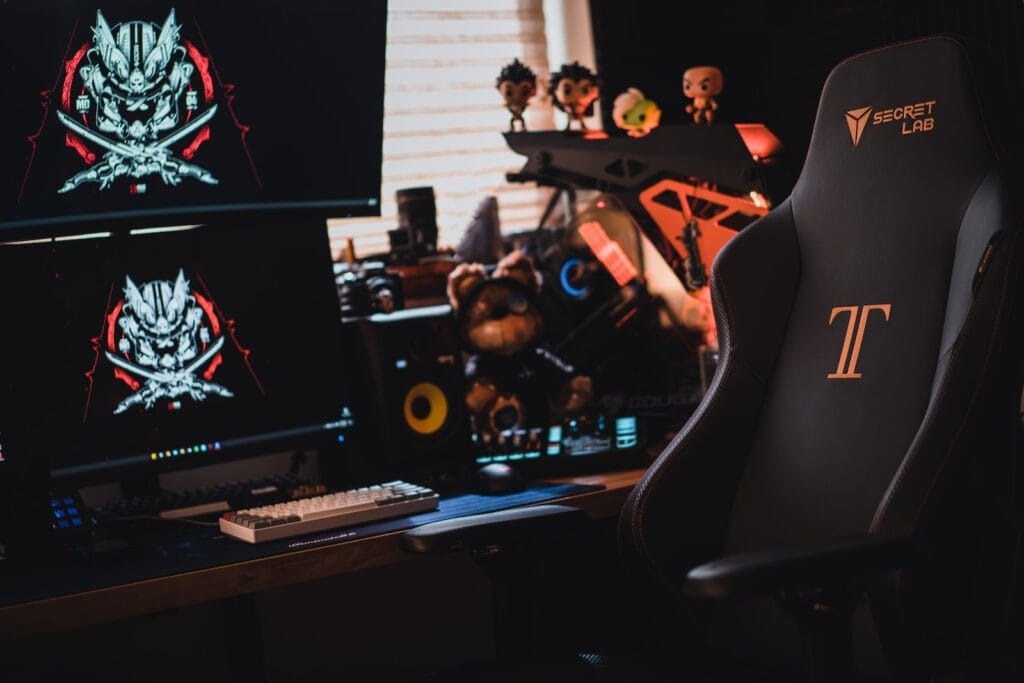
Storage and Backup Solutions
External hard drives and NAS (Network Attached Storage) devices are excellent for backing up important data and expanding your storage capacity.
Connectivity and Expansion
USB hubs, docking stations, and wireless adapters are essential for connecting multiple devices and expanding your computer’s connectivity options.
Tables: Accessory Comparison
| Accessory Type | Function | Key Brands |
|---|---|---|
| Ergonomic Chair | Comfort | Herman Miller, Steelcase |
| Monitor Stand | Ergonomics | Monmount, VIVO |
| External HDD | Backup Storage | Western Digital, Seagate |
FAQs
Q: Why are CPU fans important?
A: CPU fans are essential for keeping your computer’s processor cool. When the processor gets too hot, it can throttle its performance or even shut down to prevent damage.
Q: What are the signs that my CPU fan needs to be changed?
A: Some common signs include:
- Your computer is running hot and noisy.
- The fan is making a grinding noise.
- Your computer is shutting down unexpectedly.
Q: How do I change my CPU fan?
A: The process will vary depending on your specific computer model. However, here is a general guide:
- Turn off your computer and unplug it from the power outlet.
- Open your computer case.
- Locate the CPU fan and heatsink.
- Disconnect the fan power cable from the motherboard.
- Remove the screws or clips that hold the fan in place.
- Install the new fan in the reverse order.
- Close your computer case and plug it back in.
- Turn on your computer and check if the fan is working properly.
Q: Why would I need to upgrade my RAM?
A: Upgrading your RAM can improve your computer’s performance, especially if you find it running slow or lagging when multitasking.
Q: How much RAM do I need?
A: The amount of RAM you need depends on how you use your computer. For most basic tasks, 8GB of RAM is sufficient. However, if you are a gamer, video editor, or power user, you may need 16GB or even 32GB of RAM.
Q: How do I upgrade my computer’s RAM?
A: The process is similar to changing your CPU fan. Here’s a general guide:
- Turn off your computer and unplug it from the power outlet.
- Open your computer case.
- Locate the empty RAM slots on your motherboard.
- Line up the new RAM module with the slot and gently press it in until it clicks into place.
- Repeat the process for any additional RAM modules.
- Close your computer case and plug it back in.
- Turn on your computer and check if the new RAM is recognized.
Q: What are the benefits of using 140mm radiator fans?
A: Compared to smaller fans, 140mm fans provide better cooling performance while operating at lower noise levels.
Q: What are some factors to consider when choosing 140mm radiator fans?
A: Some key factors include:
- Airflow performance: Look for fans with high CFM (cubic feet per minute) ratings.
- Static pressure: Important for pushing air through the radiator fins.
- Noise level: Choose quiet fans for a more pleasant experience.
- Compatibility: Ensure the fans are the correct size and have the right mounting holes.
Q: Can I repair a broken CD/DVD drive?
A: The possibility depends on the nature of the problem. Minor issues like dust buildup or loose connections might be fixable. However, internal component failures often require drive replacement.
Q: What tools and resources do I need?
A: You’ll need tools like screwdrivers, tweezers, and possibly a pry tool. Online guides and tutorials can provide specific instructions for your computer model and CD/DVD drive.
Q: Why might I need to change out a PC case fan?
A: There are several reasons:
- Noise: A noisy fan could be due to worn-out bearings, dust buildup, or fan failure.
- Performance: An aging fan might not be performing as efficiently as it once did, impacting cooling and potentially throttling your computer.
- Damage: Physical damage to the fan blades or motor could lead to failure or reduced performance.
- Aesthetics: You might want to upgrade to fans with better color options or LED lighting for a more customized look.
Q: What factors should I consider when choosing a new case fan?
- Size: Ensure the fan size matches the mounting slots in your case.
- Airflow: Look for fans with high CFM (cubic feet per minute) ratings for optimal cooling.
- Noise level: Choose quiet fans for a more pleasant experience.
- Static pressure: Important for pushing air through restrictive areas like heatsinks.
- Connector type: Make sure the fan’s connector is compatible with your motherboard.
- Aesthetics: Choose fans with colors and lighting options that match your preferences.
Q: How do I change out a PC case fan?
A: Here’s a general guide:
- Power off and unplug your computer.
- Open the case.
- Locate the fan you want to replace.
- Disconnect the power cable from the fan.
- Unscrew the fan from the case.
- Install the new fan by reversing the process.
- Close the case and plug your computer back in.
- Power on your computer and check if the fan is working properly.

